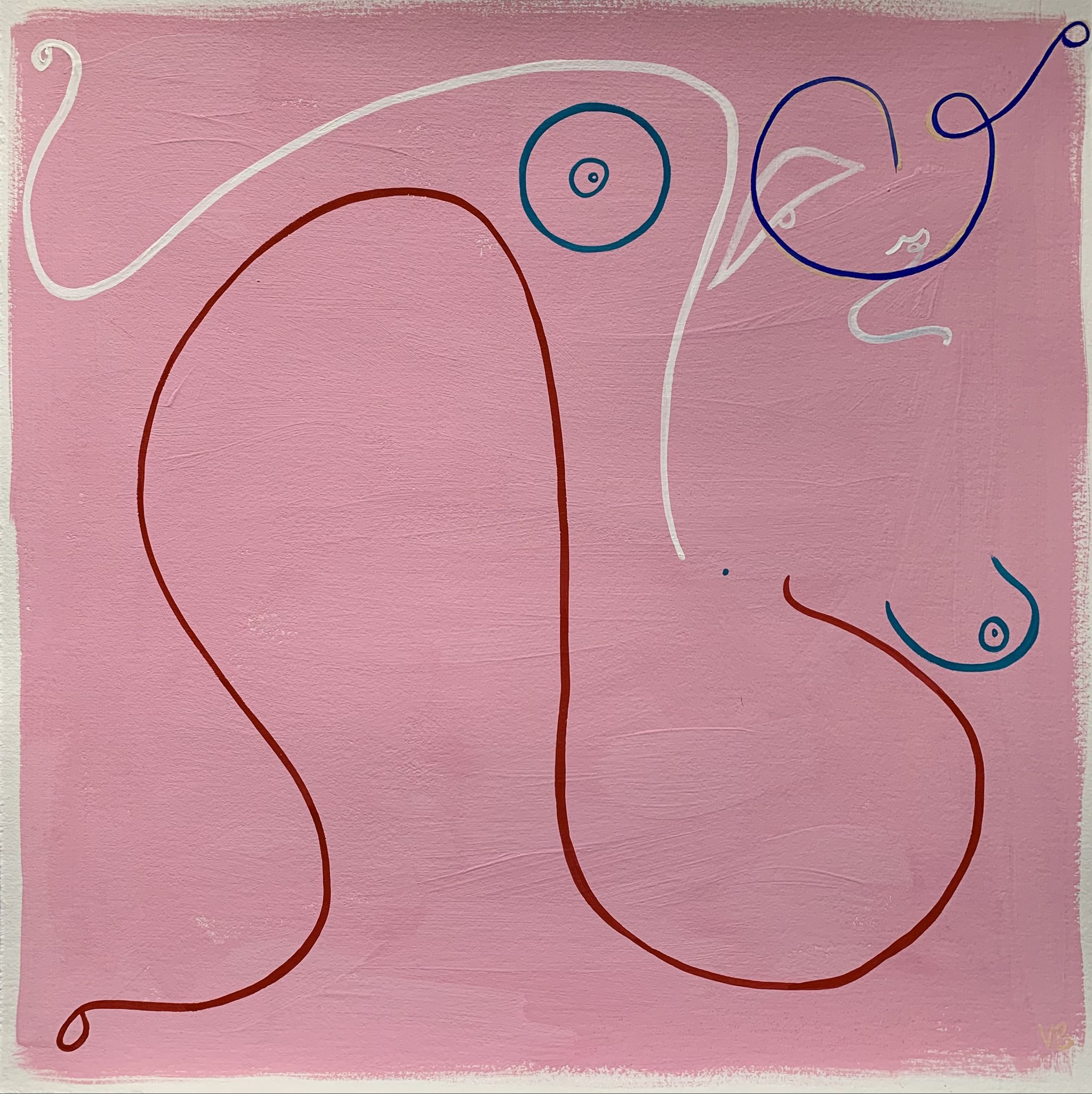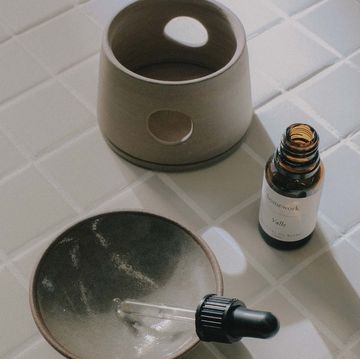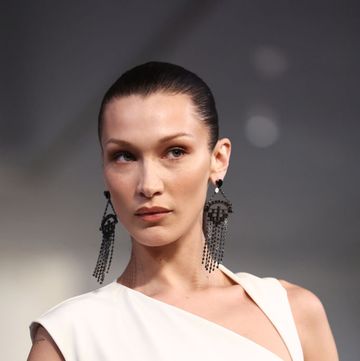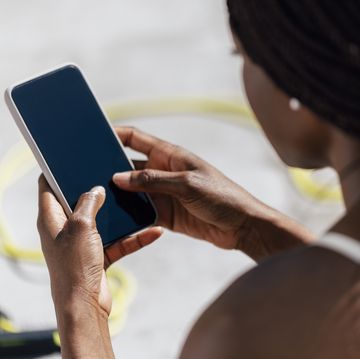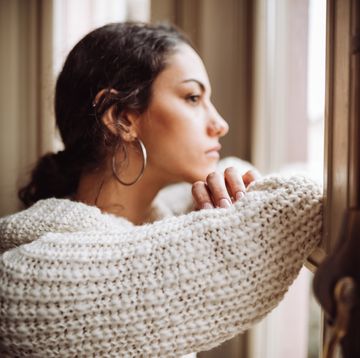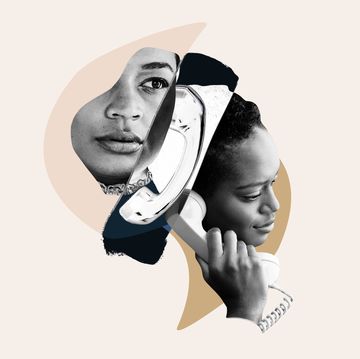Katie* has good skin. She has a flat stomach, she says, and ‘twig-like’ arms. When she looks in the mirror, however, she doesn’t see any of that. Her eyes zoom, with laser-like focus, into one part of her body.
‘My legs, my legs, my legs,’ she repeats. ‘I see cellulite on other women and appreciate and admire it. On myself, however, I just see it as an ugly blemish.’
Much like ‘crazy’ or ‘bipolar’, the term ‘body dysmorphia’ gets thrown around fairly casually. But body dysmorphic disorder (BDD) can be dangerous, and utterly debilitating. It’s a mental health condition where people become fixated on imagined defects in their appearance – to the point of obsession. These 'flaws' are often totally unnoticeable (or appear only slight) to others. In the UK, an estimated 2% of the population suffer from the condition – that’s roughly 1.3 million people.
For Katie, BDD kicked in during her last year of sixth form, but she’s had concerns about her weight for ‘as long as I can remember’. While general feelings of insecurity plague many young women, for a person who has BDD, such thoughts are all-consuming. The problem crosses over from body image concern if it’s affecting your ability to work, manage relationship or keep up a social life.
To put that into context, roughly 70% of Katie’s day is spent worrying about her legs. The condition never leaves, and is always lingering in the background.
‘When I look at myself, I see a different person to everyone else,' she explains. 'The emotional impact of this is hard. I sometimes feel like people think I am fishing for compliments when I speak in a self-deprecating manner. But that’s not the case, I find it hard to take any compliments and I speak like that as a way of excusing my body.’
Looking in the mirror is terrifying, explains Kitty Wallace of the Body Dysmorphic Foundation. ‘You need to get ready for the day, but you know that you are not going to like what you see. Every morning seems like a battle with yourself. You are fighting to not be overtaken by the anxiety of seeing your appearance and being horrified and ashamed.’
Some, like 21-year-old Rebecca, will totally avoid glancing at their reflection. Instead of focusing on just one part, she exaggerates her entire body. ‘When I do look in the mirror, which is rare, I just see stretch marks and cellulite – and those things magnify. I can’t see anything else. I feel very alienated from my body, like my head is detached. It makes me feel so uncomfortable.’
Others, like Katie, will peer into ‘every single mirror and window’ they can.
‘It might come across as vain, but I'm just looking at my legs,’ she explains. ‘When I look at my reflection, I see an imposter. I work in fashion, and although it’s becoming ever more inclusive, it’s still filled with beautiful people. Beautiful people come in all shapes and sizes, I know that, and I dress women on a daily basis from sizes 8-20. But I feel as though I am not what I should be; like I'm not good enough.’
No one knows the causes of BDD, explains Wallace. Someone might be genetically pre-disposed to the disorder, while life experiences can make you more sensitive to developing the condition.
Now a third-year fashion student, Rebecca traces her BDD back to a series of negative comments made in her childhood. ‘People would say: “oh, you're a bit chubby” and I realised that meant big.’
Swimming was popular at her school in Botswana (she lived there until she was 12), but standing poolside in a costume next to girls who were ‘straight and really slim’ proved fertile ground for comparison. ‘I felt really ugly,’ she says. ‘And those slim girls always did better than me at school. So I thought: “I have to look like that in order to do well and achieve.”’
As a teenager, she missed out on parties, talking to boys and making good friends because she worried people were going to judge how she looked. ‘I regret that so much,’ she adds, quietly, while folding and unfolding her arms. ‘[BDD] stops you from doing everything. It's a form of anxiety. You’re trapped in your head every second of every day. All you can think about is your body and how uncomfortable you feel in it.’
The condition still impacts her life in a very real way. Instead of student halls, she lives at home with her mum because, she says, 'I feel like I can't trust myself to cope like a normal person'. She doesn’t go shopping (‘I feel horrible’), will only wear loose clothes and continuously pulls her jeans up so people won’t see any skin.
She compares undressing to an anxiety attack. Taking off her top is manageable, but anything below that can result in heart palpitations. ‘I get to a point where I don’t know what to do, and then I panic because I don’t know how to get through it.’
Rebecca was officially diagnosed with anorexia and BDD five years ago. She attended therapy for two years, but after her parents divorced, she stopped going. In 2017, after a period of binge-eating, she put on weight and her body suddenly felt ‘completely’ different.
‘I didn’t know how to cope and I really needed help,’ she explains. She’s since been receiving Cognitive Behavioural Therapy (CBT), which helps her pinpoint why she does certain things: 'It’s about trying to break that circle of negativity.’
While Katie’s family are unaware she suffers from BDD, she’s supported by friends. Her boyfriend is ‘forever’ telling her it's all in her head. After recovering from disordered eating and obsessive exercise two years ago, she tries to not put too much pressure on herself.
She is a ‘clean-eater’, but it's complicated. She'll feel guilty if she doesn’t stick to what she perceives as ‘clean’ food. She runs, too, in a bid to manage her anxieties. But as she explains: ‘If I don't run for a minimum of 45 minutes per day, I will physically see my legs as larger the next day.’
Therapy and a type of antidepressant medication (called a selective serotonin reuptake inhibitor, or SSRI) are recommended as potential treatment options. Both women, however, touch on being proactive about treating the disorder. 'Invest time (and money, if you're privileged enough) in getting better,' says Katy.
For Rebecca, turning 21 was something of a milestone. While she still doesn’t ‘like’ what she sees, something 'finally' switched. ‘I struggle, but – and it sounds cliché – I realised I needed to do something different.
'Life isn’t supposed to be like this, there’s more important things to focus on. My sister had a baby last year and he’s so beautiful. I realised that I want this: a family, a partner. I don’t want to worry about my body anymore.'
*Names have been changed.

